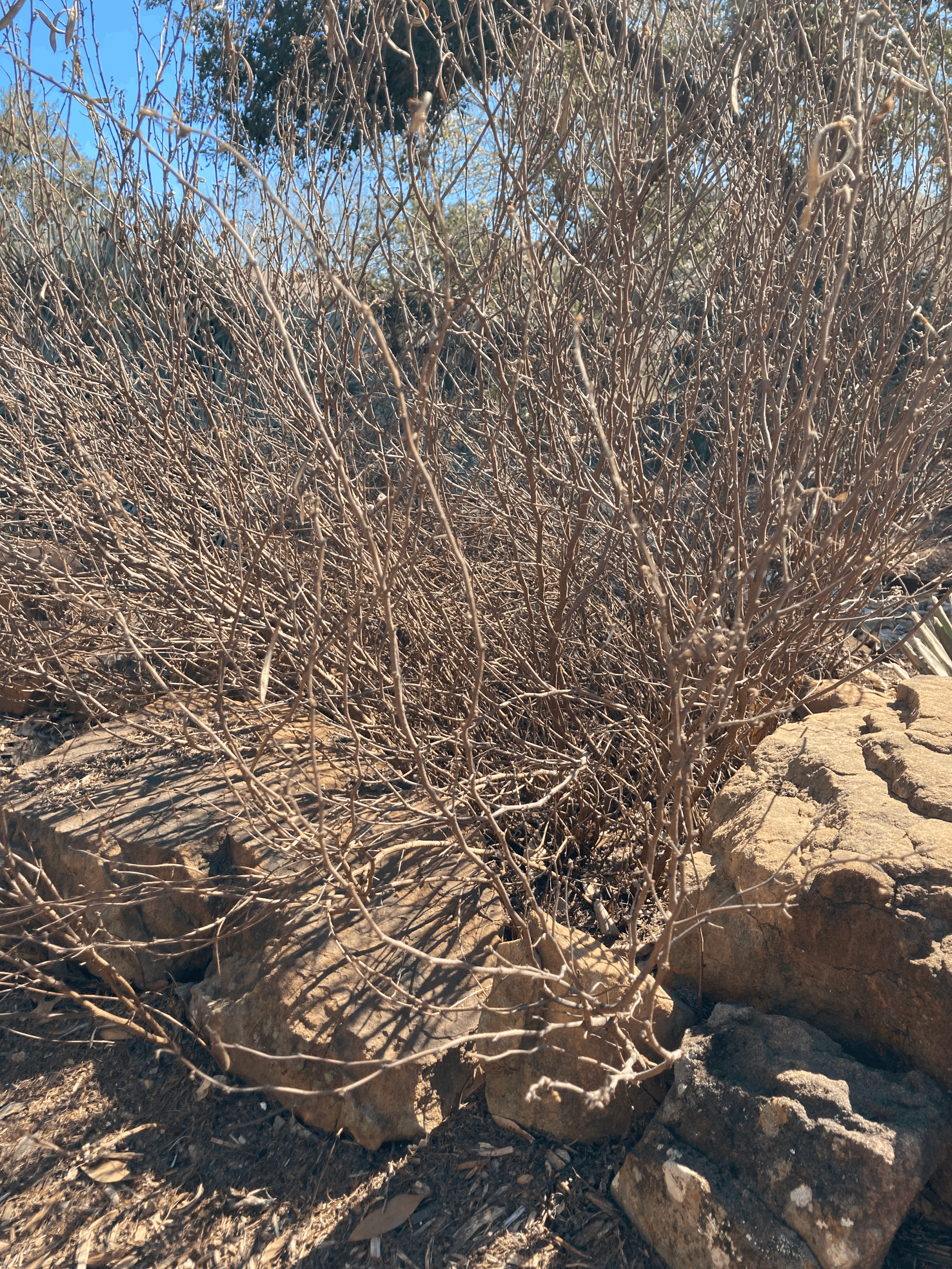Extreme Heat and Plants
Extreme heat is occurring worldwide now. The frequency and magnitude of these weather events will likely become more common. Plants growing on earth today have the ability to tolerate and adapt to these extreme heat patterns. Some plants exhibit shapes, sizes, chemical structures and mechanisms for photosynthesis created through patterns of genes or molecular code from early in lineage of each specific plant group that manifest heat tolerating capabilities. Other plants are able to adapt to the new or temporary heat challenges by changes in chemical composition or structure based on immediate needs during an extreme heat event. When plants do not have the ability to evade the stressful extreme heat environment, damage to plants vegetative and reproductive structures becomes evident. Leaves burn, stems crack, flowers wither, and fruits drop before full maturity.
Leaves shaped like needles decrease surface area to minimize water loss. Palms with leaves covering ground at base lessen soil water loss. Orientation of leaves vertically during hottest part of day minimize leaf area exposed to the sun rays. Colorful, waxy or thick leaves are designed to repel more intense wavelengths of light and preserve water in tissues, respectively. Re-proportioning of increased fats can buffer cell membranes against destructive solarization. Many of the chemicals used as plant medicines can increase in quantity to add to defense processes during heat stress. Plants can vary in ways of sequestering carbon in CO2 for energy creation during photosynthesis and with resultant release of oxygen. This allows plants with C4 and CAM mechanisms of photosynthesis to tolerate in much greater measure the most extreme heat on earth.
Central Texas is now consistently becoming one of the hotter places in the United States. Plants historically selected as landscape options here may not represent the best options anymore. Many dry and heat loving plants from climates not classified as humid subtropical can thrive for short periods during long, dry heat spells but when moisture laden patterns persist these plants are prone to fungal diseases and can die fairly quickly. The key to plant selection in Central Texas is to balance plants with tolerance to extreme heat, moisture and cold. There are many native Texas plants and non-native plants from similar humid subtropical climates with great potential to thrive in the challenges of the Central Texas climate and in the increasing frequency and severity of heat in this region. Many of these plants exhibit the heat adaptations mentioned above. Dwarf Palmetto Design has the experience of propagating, growing and finding many novel and long-established heat hardy plant selections for landscapes to meet the challenge of an increasingly heat-oriented Central Texas climate.










